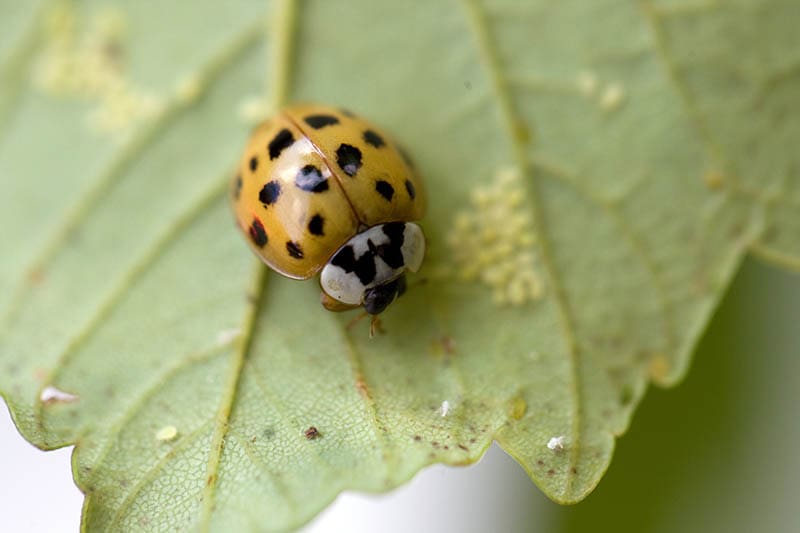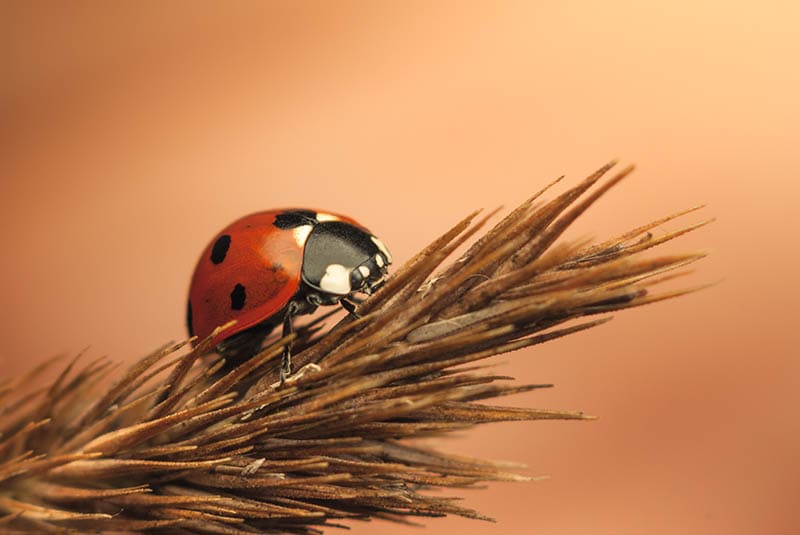Do Ladybugs Hibernate? Facts & FAQs
-
Pete Ortiz
- Last updated:

Who doesn’t like ladybugs? Not only are they fun, charming, and nice to be around, but they’re also of great aid to plants. Also known as lady beetles, these majestic creatures are most active during spring and summer. So, does that mean they hibernate in winter? That’s right! During the cold days, ladybirds undergo diapause once they find a safe spot where they can “lay low”.
As cold-blooded insects, ladybugs rely heavily on external heat to function. When the temperature drops, they become dormant. Where do lady beetles like to hibernate, though? Do they need to drink or eat something while in a dormant state? Is ladybug migration a thing? Join us, and let’s find the answers together!
What Is a Ladybug? Breaking It Down
This might come as a surprise, but ladybugs aren’t actually bugs; instead, they are beetles and belong to the Coccinellidae family. In the UK, they’re mostly called ladybirds or lady beetles, and that makes a bit more sense. Another interesting fact: in contrast to popular belief, the wings of these buzz-worthy insects aren’t always red with black dots. They can also be yellow, orange, or black.
The patterns vary as well. In the United States and Canada, we’ve got over 500 different types of ladybugs (overall, there are 6,000 species living on the planet). Now, most lady beetles are rather tiny (no more than 0.4 inches in size) and only live for 2–3 years. They have rounded backs, a pair of antennas, and two sets of wings. As for the diet, it includes aphids, scales, mites, mealybugs, and other garden pests.
So, Do Lady Beetles Overwinter?

Since they don’t have a high tolerance to cold temperatures, ladybugs are forced to hibernate during winter days. They go into diapause, which is a form of dormancy. Technically speaking, it’s a state of delayed development (also known as arrested growth), a physiological state that keeps the body alive and functioning. This is a rather common thing in the animal kingdom.
It’s mostly activated during harsh environmental conditions (like freezing temps). Another important thing to understand is that lady beetles don’t feed while hibernating. They rely solely on their own fat reserves. The metabolism slows down and the body lives off those rations until the warm days arrive, and the insects go back to hunting. They usually start waking up when the temperature reaches 50–55°F.
How Long Does the Hibernation Last?
Depending on the species and the climate in the area, ladybugs go into “sleep mode” for 3–9 months. To make sure they’ll have enough saved-up energy to survive for such a long time, lady beetles eat vigorously in mid-summer through late fall. And once they accumulate enough fat, the beetles join the rest of the loveliness in search of a safe spot where they can enter a dormant state.
A quick note: it’s not recommended to disturb ladybugs while they’re hibernating. If you “wake them up” before spring, that can lead to catastrophic consequences. There simply won’t be anything to feed on. Furthermore, when released into the wild, lady beetles won’t be able to handle the cold. Most likely, 90% of the group will die.
Where Do Ladybird Beetles Like to Spend the Winter?

Ladybugs look for shady, well-protected shelters away from prying eyes. In the wilderness, they set up shop in mulch and debris. If you’ve got grass clipping, leaves, wood chips, or pine needles in the backyard, chances are, these hard-working insects will call it home for the next three to nine months. Tree bark, cracks, and crevices are also common spots for them. Some species like to hide in buildings, especially the dark and humid areas.
Don’t be surprised if you find a huge group of ladybird beetles using your basement or attic as a winter hideout! As long as the area is dark and relatively warm, they’ll see potential in it. So, how do these insects know it’s time to become dormant? Lady beetles see lowering temperatures and fading light as a sign that winter is coming. That’s when they start looking for a place where they can go for a long sleep.
- Areas with temps above the freezing point
- Shelters that provide protection against snow
- Areas that are already occupied by other ladybugs
- Secluded areas that remain untouched
- Places where predators can’t find them
- Moist, yet reasonably dry spots
- Away from harsh, cold winds
What Do Ladybugs Feed On?
Pests and pollen are the main dishes for most ladybug species. More specifically, they like to eat aphids, common destructive bugs that drink the sap, the lifeblood of garden plants. On average, adult ladybugs eat 50 aphids a day (or up to 75 if they’re very hungry). This is interesting: female lady beetles lay their eggs (up to 2,000 in their lifetime) close to aphid colonies.
The eggs take 2–3 days to hatch into larvae and start to feed on baby aphids. The ladybug larvae’ life cycle is two weeks, and in that time, they devour 300–400 pests. Sometimes, they can eat up to 200 aphids a day! After that, the insects don’t eat anything until the exoskeleton develops and full-fledged adult lady beetles are born.
Ladybug Migration: Does It Ever Happen?

The answer is yes, it most definitely does. Just like most animals and insects that migrate to start a new cycle (feed, mate, and reproduce), ladybugs move from one area to another in search of a better life. In early spring, they migrate to valley floors to feed on aphids and lay their eggs. They do this once the outside temperature reaches 65–70°F.
In early June, the aphid population shrinks, and that’s when lady beetles leave the valleys and move to the mountains. There, pollen and nectar become their main diet. Finally, once they accumulate enough fat and it gets dark and cold outside, ladybugs go into diapause. And when they wake up, the cycle repeats itself.
Can You Put Ladybugs in a Fridge?
Yes, you can, but there are certain rules to follow. The good news is—ladybugs are capable of surviving in low temps for quite a while and take little time to “get back on their feet”. That said, you can’t keep them in the fridge forever. Now, the best temperature for refrigerating lady beetles is 35–40°F. If you release them after a month, 95% of the pack will survive.
In two months, 90% will make it; the percentage drops to 75% in three months. When going over three months, you should expect 40% of the ladybugs to die. These are estimates, of course, but they’re rather accurate. To make ladybugs last longer, spray a very small amount of water into the bag/container once in 1–2 weeks.
Do All Insects Hibernate? A Quick Guide

No, not really. While the vast majority of insects do, indeed, prefer to get some “shut eye” during the cold days, some choose to migrate to warmer areas. So instead of hibernating, they keep feeding, pollinating, and breeding, but in a new location. And then we have insects that survive harsh winter temps thanks to cryoprotectants. These compounds keep their bodies warm enough to function.
For example, the Guinea paper wasp uses sugars or polyols to protect its own body from freezing. However, this isn’t nearly as common as hibernation. Now, while most animals sleep in dens (like bears, squirrels, and groundhogs, to name a few), insects prefer to weather the storm in logs, tree stumps, under debris, and man-made constructions like an attic or old shed.
Conclusion
Ladybugs prefer to hibernate instead of migrating because they’re cold-intolerant. And depending on the ladybug type, the climate, and other factors, they may lay dormant for up to nine months. Lady beetles start looking for a suitable shelter to spend the winter the moment it starts to get colder and darker outside. The reason for that is they lose their mobility in lower temps.
As we learned today, you can use their low tolerance to cold temperatures to your advantage and store them in the fridge. Just make sure to follow our recommendations on this so that you don’t kill these beneficial insects before you have a chance to help out with the pests. Take care of the ladybugs, and they’ll return the favor!
Featured Image Credit: Heide Pinkall, Shutterstock
Contents



